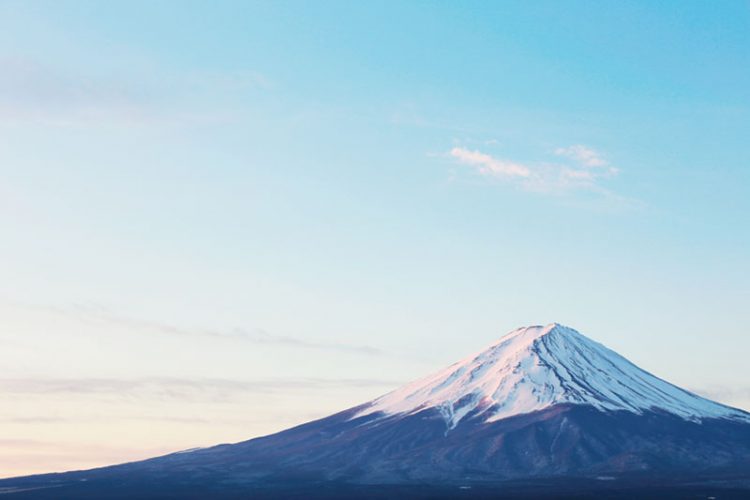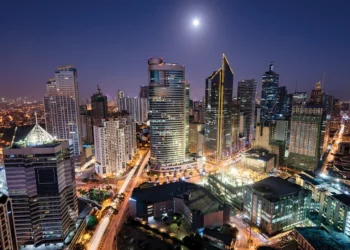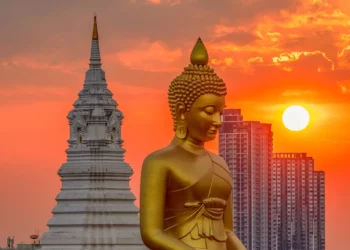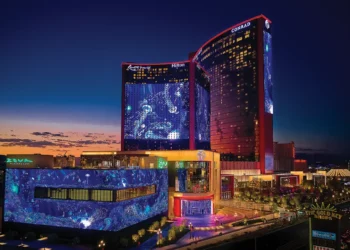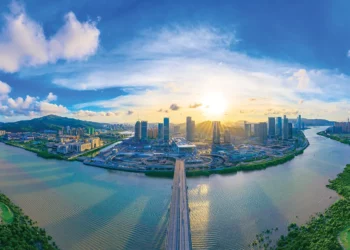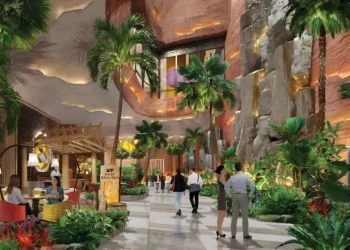Owning and operating an integrated resort in Japan remains the undisputed holy grail of the global gaming industry. But introducing a totally new IR industry to Japan has been a rocky road with more twists than an Agatha Christie novel – and we’re far from done yet. In this first instalment of a two-part article, we take a look at where the IR situation in Japan currently stands in this decades-long ultra-marathon.
Japan has one of the world’s most developed economies, consisting of a population of 126 million people with a GDP per capita around US$40,000, making its US$5 trillion economy the third largest in the world after the US and China. Its sumptuous food and beverage offerings, well-developed infrastructure, spectacular cityscapes, beautiful countryside and unique, sophisticated culture all combine to create a highly coveted tourist destination drawing visitors from across the planet.
One of the last remaining major developed economies of the world without a casino gaming industry, Japan has been talking about introducing such an industry for decades. Interest hit fever pitch a few years ago with the passage of the Integrated Resort (IR) Promotion Act in 2016 and the subsequent Integrated Resorts (IR) Implementation Act in 2018. Seemingly every major IR company in the world threw their hat into the ring, with many talking a big game. Potential investments in the billions were bandied about – as much as US$10 billion or possibly more.

But fast forward to 2021 after the crippling global pandemic of the past 12 months, and where, exactly, does the burgeoning Japanese IR industry sit today?
WHY?
Why does Japan even need an IR industry? It already has gaming options, dominated by the enormous (but steadily declining) pachinko industry, which historically has had a GGR in the same ballpark as that of Macau’s IR industry, and the Japan Racing Association, the world’s largest horseracing market with a whopping turnover of some US$27 billion in 2019.
 The oft-stated justification for the introduction of an IR industry to Japan is a re-invigoration of the economy, particularly that of regional areas. After spectacular post-war growth dominated by world-leading car and electronics industries and culminating in the infamous 1980s asset bubble, Japan’s economy collapsed in late 1991 and has never really recovered. Commentators initially referred to this phenomenon as the “lost decade”, but that decade is now nearly 30 years old. Japan’s interest rates hover around 0%, and her average annual GDP growth rate since the year 2000 has been glacial at just under 1%.
The oft-stated justification for the introduction of an IR industry to Japan is a re-invigoration of the economy, particularly that of regional areas. After spectacular post-war growth dominated by world-leading car and electronics industries and culminating in the infamous 1980s asset bubble, Japan’s economy collapsed in late 1991 and has never really recovered. Commentators initially referred to this phenomenon as the “lost decade”, but that decade is now nearly 30 years old. Japan’s interest rates hover around 0%, and her average annual GDP growth rate since the year 2000 has been glacial at just under 1%.
Japan suffers from one of the fastest declining populations in the world – the current 126 million is projected to decline 15% to 107 million by 2040, and some estimate the population will fall to just 87 million by 2060. Japan has the highest proportion of elderly citizens of any country in the world – more than a third of the population is over 60 years old and the national average life expectancy is 85 years. It has far more centenarians per capita than any other country.
On top of a stagnant economy and a declining population, Japan also regularly suffers from natural disasters as a result of her climate, topography and the plate tectonics of the region. In just the past decade she has been beset by typhoons, landslides, earthquakes, tsunamis and even a major volcanic eruption. The 2011 tsunami and subsequent disaster at the Fukushima Daiichi nuclear power plant was the most expensive natural disaster in recorded world history – estimated by the World Bank to have cost over US$200 billion.
All these factors see Japan in desperate need of policies and initiatives to propel the economy forward in the 21st century. Former long-time Prime Minister Shinzo Abe was a leading proponent of introducing an IR industry to Japan as one such policy, aimed at driving inbound tourism. In 2019 Japan hosted 32 million tourists, of which 9.6 million were from China, up from just 2.4 million inbound Chinese tourists five years earlier. The Japanese government has a total inbound tourism target of 60 million visitors by 2030, of which around 18 million are expected to be from China.

Abe resigned as Japan’s Prime Minister in September last year for health reasons, but his successor Yoshihide Suga spoke in the Japanese Diet’s House of Representatives on 28 October, confirming his belief that IRs are an important initiative for Japan in becoming a developed tourist destination and reiterating his intention to continue the pro-IR policy of his predecessor. This is unsurprising given that Japan’s new PM was Abe’s right-hand man for many years – even seen by some as a “shadow Prime Minister” during the Abe years.
WHAT?
So, what changed in 2020? In short – a lot.
As with just about every other industry across the planet in 2020, the Japanese IR landscape was dominated by the global coronavirus pandemic. The pandemic caused a rush “back to base” for many expatriate executives from global IR companies who had been working in Japan. Worse, it effectively made travel to and from Japan all but impossible, meaning representatives of the world’s IR companies couldn’t meet with key stakeholders such as politicians, bureaucrats, contractors, potential consortium partners, investment banks and the like. As many have found in the new pandemic normal, online videoconferencing software like Zoom and Microsoft Teams offer something of a substitute – but nothing beats face to face meetings, particularly in Japan where building personal relationships is such an important part of doing business. And especially when that business is on a scale of billions of dollars.
Another key factor to hit IRs in Japan in 2020 was the saga of Chinese online sports lottery provider 500.com. IAG ran no less than a dozen stories throughout 2020 on what came to be known as the “500.com scandal,” in which two Japanese-nationality 500.com advisors, Masahiko Konno and Katsunori Nakazato, received suspended sentences for offering bribes to Diet member Tsukasa Akimoto, who was Cabinet Office Deputy Minister in charge of IRs at the time. Two other supporters of Akimoto, Akihito Awaji and Fumihiko Sato, received prison sentences for attempted witness bribery in relation to the case. Akimoto himself is still awaiting trial and vehemently maintains his innocence.

The 500.com case tarnished the global IR industry in the eyes of Japanese stakeholders, which was unfair given that 500.com is not an IR operator in any way, shape or form, and given its lack of experience, really had no business being involved in the Japanese IR process at all.
A combination of the pandemic and the 500.com scandal delayed the issuing of the Japan national government’s long-awaited Basic Policy, which was finally issued in draft form on 9 October and then as a finalized document on 18 December.
The revised Basic Policy for IRs saw additions in three areas, none of them a surprise. There were increased health, hygiene and safety requirements – clearly a response to the global pandemic; updated rules for contacts between government and operators in reaction to the 500.com scandal; and additional measures addressing problem gambling, long a major concern of the Japanese public and some government stakeholders.
 HOW?
HOW?
The process for winning a bid for an IR in Japan has now been long-established. The first step is for a site to be selected and agreement to be formed between the local city and its prefecture on the desire to host an IR on that site. This needs to be approved by city-level assemblies.
The prefecture then needs to create a “basic development plan” and set a budget for IR development work. The prefectural implementation policy and finalized selection criteria to be used in determining the winning bidder must be approved by the prefectural level assembly.
 Next comes a local-level RFP process in which the city and prefecture request a formal proposal from candidate operators, assess these proposals against their pre-determined selection criteria and ultimately select a winning bidder.
Next comes a local-level RFP process in which the city and prefecture request a formal proposal from candidate operators, assess these proposals against their pre-determined selection criteria and ultimately select a winning bidder.
Once this is complete, the prefecture and the successful operator (now effectively their bidding partner) need to formulate a “basic agreement” and together create a joint development plan. This joint development plan needs prefectural-level assembly approval, after which it will be submitted to the national government as a hand-in-hand joint bid of operator and local-level government.
After this, the national government will consider the joint applications from across the country and ultimately select up to three winning locations in what is referred to as the “first round.” Seven years after the first round, more licences may be issued.
WHERE?
Since late November 2019, when Hokkaido Governor Naomichi Suzuki announced that Hokkaido was shelving its bid for an IR for the foreseeable future, there have been no changes to the locations across Japan still competing in the IR race.
There are four locations which have officially declared their interest, and four locations that are still talked about as possible late entrants to the race.
Osaka, once the darling of the process, has seen a raft of operators withdraw to the point that US gaming giant MGM Resorts together with their Japanese partner ORIX are the one and only operator consortium remaining. Nevertheless, Japan’s second-largest city (after Tokyo) has been very upbeat on the IR process for a long time, with Osaka Governor Hirofumi Yoshimura and Osaka City Mayor Ichiro Matsui in lockstep on the bid. Located in the heart of Japan in the Kansai region on Honshu island, Osaka is often touted as the city most likely to see Japan’s first metropolitan IR open.
Regional location Wakayama, under long-time Governor Yoshinobu Nisaka, is similarly gung ho about hosting an IR. In a May 2019 interview with IAG, Governor Nisaka said, “In my personal opinion, objectively speaking, Wakayama is sure to win one of the licenses. And I strongly believe that the [national] government will have the same opinion. This project is very promising and that’s why we are so keen.” Wakayama’s attitude has not changed since then, and Governor Nisaka sees no issue with Wakayama’s proximity to Osaka, just 75 minutes south by car. However, some analysts do, going so far as to say that IRs in both Osaka and Wakayama would not make sense.

Nagasaki, on the major island of Kyushu at the far west of Japan, is another regional location pushing hard for an IR. Vice-Governor Ken Hirata is leading the charge under his Governor Hodo Nakamura. Nagasaki is known to be actively trying to stimulate interest from more candidate operators to increase the competitiveness of its RFP process. The IR site, at Dutch theme park Huis Ten Bosch at Sasebo City, has been long known. Experts cite issues with the location being so far from the nearest major airport at Fukuoka – 100 minutes away by car. A high-speed ferry has been proposed, but even this would be well over an hour’s journey from Fukuoka airport. Nagasaki is touting itself as the “Kyushu candidate,” as it has the support of the Kyushu Governors Association. The association brings together the seven prefectures of Kyushu island as well as Yamaguchi prefecture (directly opposite Kyushu at the western end of Honshu island) and Okinawa prefecture (far to the south midway between Kyushu and Taiwan).

Yokohama has the advantage of being located in the greater Tokyo metropolis, the population of which is 38 million, making it the world’s most populated metro area. On a good day the train ride from Yokohama to the heart of Tokyo can be as little as 20 minutes.
But 74-year-old power-mayor Fumiko Hayashi has an uphill battle, with a dearth of public support and 200,000 resident signatures supporting a referendum on the IR issue – widely viewed as a signal of negative public sentiment. She also has a mayoral election to survive in the second half of 2021, and operators are concerned about the possibility of an election loss leading to Yokohama dropping its IR bid.

Rumors abound of a Tokyo bid, said to be set for the Odaiba region of the city. Tokyo’s popular and intelligent Governor Yuriko Koike (who may even have ambitions to move to national politics) has quietly been taking the steps necessary to keep her options open, while not expending political capital by openly announcing a bid. The 2021 Tokyo Olympics, delayed 12 months because of the coronavirus pandemic, are unlikely to interfere. A Tokyo bid would immediately energize and attract the world’s largest IR companies, who would salivate at the opportunity to own an IR at the epicenter of such a massive population base.
After Tokyo, the next most likely place to raise their hand is Aichi prefecture. Governor Hideaki Omura has previously expressed a preference for a site at Chubu Centrair International Airport, which services Japan’s third-largest city, Nagoya. The prefecture has previously held an RFC process and has a budget set aside for developmental work, which is a positive sign.
Much like Yokohama, Chiba is within the Tokyo metropolitan area, albeit on the other side of the bay. The widely proposed site is Makuhari New City, just under an hour by train from the heart of Tokyo. However, upcoming Mayoral and Gubernatorial elections may interfere.
Until the aforementioned withdrawal from the race, Hokkaido’s candidate area was the Uenae district of Tomakomai city, located near Shinchitose Airport, the main airport servicing Hokkaido and its capital Sapporo. A large 1,000-hectare plot of land was earmarked, but Hokkaido Governor Naomichi Suzuki determined, “There is a high possibility that the candidate location serves as a habitat for rare animals and with the limited time allotted it would be impossible to take the appropriate environmental considerations.” Could recent pandemic delays be a blessing in disguise for Tomakomai city?
The one takeaway regarding Tokyo, Aichi, Chiba and Hokkaido is this – time is very tight indeed. To comply with the new schedule recently announced by the national government, they would have to declare their intentions extremely soon.

WHEN?
To many in the industry, this is the most vexing question. Japan has been talking about introducing IRs to its shores for decades, and the process has been besieged by delay upon delay. There always seems to be some kind of pause-causing election around the corner in Japan, and in 2020 we’ve seen a change of Prime Minister and the global pandemic. The political will to push IRs through is only on one side of national politics, that of the ruling Liberal Democratic Party (LDP), but at least that side has a safe majority in the Diet.
The Japanese have a notorious reputation for planning everything in business and politics to the nth degree, so decision-making can be a tedious and lengthy process requiring many steps up and down a chain of command. The upside of this fastidious approach to planning is that once decisions finally are made, implementation should roll out fairly efficiently.
Shortly after the passing of the Integrated Resorts (IR) Implementation Act in 2018, the prevailing wisdom was that Japan’s first IR would open in Osaka just in time for that city’s hosting of the World Expo in 2025, but that horse has long bolted. The Japanese government has now officially revised its schedule for opening the nation’s first integrated resorts to the second half of the decade.
This was announced in December at a joint sub-committee meeting which included the Liberal Democratic Party’s Ministry of Land, Infrastructure and Transport, the ministry responsible for the rollout of IRs in Japan. The announcement followed the recent postponement of the application period for local governments, originally between 4 January and 31 July 2021 but now delayed approximately nine months to between 1 October 2021 and 28 April 2022.
Joji Kokuryo, Managing Director of Japanese consulting firm Bay City Ventures, has been following the Japanese IR story for years. “Operators and local governments are generally in agreement that the joint planning process will need at least six months to do effectively,” he says. “This means local governments in Japan should be selecting their operators by the end of summer at the latest.”
The next six to eight months are going to be a very busy time for prefectural governments. Each will need to begin their RFP processes as soon as possible in order to have selected their operator partner by say 3Q21 at the latest.
On the subject of operator selection timing – we should consider that the best predictor of future behavior is past behavior. Given the delays in the process so far, it would not be at all surprising if a reason arose to delay the entire process once more. Were that to happen, potential new entrants such as Tokyo, Aichi, Chiba, Hokkaido or even other locations would be much more likely to enter the fray.
 Once submissions are made to the national government, when will the winners ultimately be selected? And beyond that, when will the IR doors actually open and the first bet be placed? This is when the entire process becomes much more fluid.
Once submissions are made to the national government, when will the winners ultimately be selected? And beyond that, when will the IR doors actually open and the first bet be placed? This is when the entire process becomes much more fluid.
There are many steps between an operator and location being selected and the first chip coming to rest on green baize. Numerous approvals at the city, prefectural and national levels. Regulator consultations. Financing issues. Public consultations. And some experts estimate construction in Japan will take around 50% longer than usual, due to Japan’s strict building requirements and labor issues. Further, the way the rules of the game have been structured, it’s difficult to stage the rollout of the properties, so they will have to essentially be built in their entireties before the ribbon is cut. The national government says it is currently aiming to have the first IR open in the “second half of the decade,” but all things considered it would not be out of the question for that to be in the 2030s.
WHO?
Notably, three of the four major Las Vegas IR operators – Caesars, Las Vegas Sands and Wynn Resorts – have withdrawn from the Japan IR process, for a variety of reasons. These include concerns over the ROI, given the prevailing and likely regulations and investment levels required, and a desire to focus on core markets during the more difficult times the industry is now faced with. Even the one major Las Vegas operator remaining in the race – MGM Resorts – finds itself as the only qualified bidder in Osaka’s RFP process. Such a lack of competition will surely change the dynamic of the Osaka process for MGM Resorts and their Japanese consortium partner ORIX.
Of the three Macau concessionaires without US properties – Galaxy, Melco and SJM – Galaxy and Melco have both made clear their preference for major metropolitan locations in Japan, as has Genting Singapore, one half of the highly successful Singapore IR duopoly, and local Japanese gaming manufacturer Sega Sammy, who also participates in an IR in Korea.

Then we see a slew of companies which have made clear their intentions to pursue regional locations. These include Hard Rock, Mohegan Gaming & Entertainment and Rush Street. All three were initially known for pursuing the Hokkaido location at Tomakomai, but are open to other locations in Japan. In Wakayama, Suncity and Clairvest are the two companies in the race.
Nagasaki is being pursued by Oshidori International Holdings, Casinos Austria, Pixel Companyz working with Groupe Partouche and a consortium consisting of Get Nice Holdings and local Japanese company Current Corp, but don’t be surprised to see a number of other companies join the RFP process, particularly those formerly pursuing Hokkaido.
In part two of this article, to run in the February issue of IAG, we’ll be comparing and contrasting all the above candidate operators, as well as discussing likely investment levels and major outstanding issues in the IR process in Japan.






